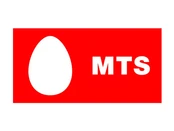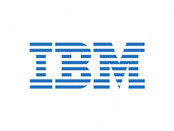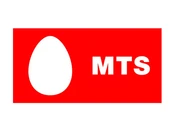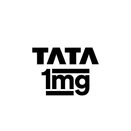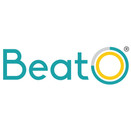Does PR really works, If yes then how to measure the effectiveness (KPIs) of PR?
In the past days when PR was very traditional & done majorly by offline like events, newspaper articles, it was quite hard to measure effectiveness of PR, but with rise of technology & advancements in data analytics marketeers are now looking for sharp & pin pointed data to prove the effectiveness of PR. Some of the metrics are very important & some doesn’t play much signification due to attribution issues.
1) Media Added Value (AVE :- Advertising Value Equivalency)
1) An Ad is always positive. An article can be positive, neutral or even negative
2) The value (in our case it was 100K) is always calculated on ‘Rack’ rates while in reality brands do get very good discounts even like 50%
3) How the AVE is calculated in digital coverage is questionable. In digital, ads are charged on CPM. Also CPM vary a lot basis size, targeting, duration etc. while an article will be published as a fixed property in a bigger space. So again no standard benchmarks
AVE can be a lucrative metrics for agencies to showcase to brands but in reality it is a flawed metrics. No standard ways of calculating & quite debatable
2) Media impressions Media Impressions are the total number of exposures to your PR ad. A person can receive multiple exposures over time i.e. if one person was exposed to a PR five times, this would count as five impressions. Note impressions should be confused with reading. Whether a impression of a PR article is read by audience is not known
3) Media reach Media reach is the total number of different people exposed, at least once, to a PR during a given period. This is an important metrics. It tells you about the reach of PR. How many people (unique) have seen (no guarantee of read) your PR is measured by this.
Reach is important to track. More the reach, more the effectiveness of PR. However this is not the ‘Read’. A PR article clicked will be counted as impression but not necessarily it is read also. These type of impressions are called as ‘Passive’ Impressions & if read properly then it is called as ‘Active’ Impressions
Also media impressions should be counted for at max 5-7 days and not 30 days (which is standard). Content rarely “lives” online longer than five to seven days nowadays
4) Brand mentions & Total brand mentions Brand mentions are when a brand is referenced or “mentioned” on the PR. This includes hashtags also. Total brand mentions is number of impressions multiplied by the number of brand mentions
It is important to note that not all brand mentions are created equal. For example, a negative mention of a brand may have a different impact than a positive mention, and the context of the mention can also affect the perceived value of the mention.
5) BLS Brand Lift survey is a tool to measure your PR ads’ impact on the perception of your brand. Pre and post-brand lift surveys on key parameters like awareness, perception, quality of awareness; and measurement of channels are important.
Word of caution :- It’s important to ensure that the survey is designed and administered correctly in order to obtain accurate results. Many a times agencies do this just for sake of doing with no authenticity of data presented. It should be done via third party routes
6) Traffic/ installs Traffic increase – on app and web from new and repeat users; increase in organic/ total app installs ; number of link clicks. Although this is tough to measure or directly attribute to PR as multiple activities are going on at one point of time. So not a very reliable metrics.
7) SOV The percentage of all online conversations (brand mentions + hashtags) about your brand, compared to those of your competitors.
SOV = number of mentions of your brand/total number of brand mentions (yours + your competitors’) x 100
One issue with SOV is that only measures the amount of coverage, not the quality. It doesn’t take into account sentiment, where the brand name appears, how many other companies were mentioned in the piece or a variety of other qualifying factors.
There could also be moments when your brand’s share of voice is lower than desired, but the media placements you did secure are very strong
The next metrics will be related to SEO but before that let’s understand few things
Relation between PR & SEO
PR and SEO (Search Engine Optimization) are closely linked because both aim to improve a brand’s visibility and reputation among the target audience.
In bigger enterprises, the public relations department and the SEO department probably have no idea what the other is doing. A huge missed opportunity! So bring your SEO and PR team together
SEO has 2 main parts :- Onpage (Technical) & Offpage. PR can be a very good support in creating high quality backlinks (do-follow or no follow) from high domain authority websites
How PR can help Offpage SEO
Nowadays with digital PR, articles are getting published in digital format in media. By placing articles in high domain authority publications, such as renowned online newspapers or magazines, you can collect high quality backlinks which can help in SEO.
Also any website which is indexed by Google has a Domain Authority which is given by tools like Ahref, Moz etc. With more content through PR & relevant backlinks from them the DA of your website will increase automatically. The reason is that media houses have higher DA & backlinks from them sends positive signal to Google crawler & hence passes the juice to the main website.
8) SEO metrics
8.1) % of articles with backlinks
Out of all the articles published, how of them contain backlinks. e.g. if 250 articles published & let’s say 150 articles have backlinks then the % would be 60%
8.2) Total number of backlinks
Out of 250 articles, how many backlinks are made. One article can have 2-3 backlinks also
8.3) % of do follow & no follow backlinks
Out of 150 articles that has backlinks, how many have do follow & how many have no follow backlinks. Do follow backlinks are best as it passes maximum juice back to main website. But big media house websites, refrain from giving do follow backlinks
8.4) % Brand keywords backlinks
Out of 150 articles that has backlinks, how many are backlinked against the brand keywords (e.g. brand keywords like Zomato, Makemytrip etc.)
8.5) % of anchor text backlinks
Out of 150 articles that has backlinks, how many are backlinked against the anchor text (e.g. Top 10 destinations in India for Makemytrip etc.)
8.6) Improvement of SEO ranking on targeted keywords
Ideally while writing the PR article, do keep in mind the top keywords, anchor texts to be backlinked. This will help in improving SEO. Over a period of time, track the movement in rankings for the targeted keywords
8.7) Improvement of DA of website
Track the improvement of DA of your website. PR helps (not immediately) in improving DA Summary
PR metrics help organizations understand how well they are meeting their goals and objectives, and can be used to demonstrate the value and ROI of PR efforts.
It is important for Marketeers to establish clear KPIs at the outset of a campaign or strategy, and to regularly track and analyze these metrics to make informed decisions and improve future PR efforts. By measuring PR metrics and demonstrating the value of PR, organizations can build stronger relationships with stakeholders and achieve greater success in the long term








